Ranking the top-10 best NHL defensemen in 2021

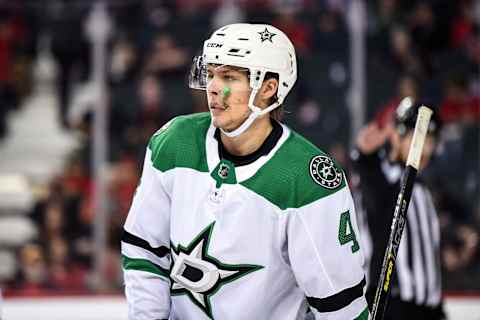
A list ranking the best number one defensemen playing in the NHL right now
The Norris Trophy is awarded each year to what we would presumably call the NHL‘s best defenseman, by members of the Professional Hockey Writer’s Association.
Members cast their votes, ranking the top 5 defensemen currently in the league. The player with the best overall results wins. Incidentally, the Hart Trophy (for the most valuable player) is also decided this way. You can see the voting results of the Norris and Hart here.
The top 10 Norris finalists in 2020 were:
More from Puck Prose
- Detroit Red Wings 2023 Rookie Camp Has Plenty of Ups and Downs
- This Columbus Blue Jackets rookie doesn’t want to be forgotten
- 2 trades the Boston Bruins must make to secure the Stanley Cup
- 3 reasons the Avalanche won’t win the Stanley Cup in 2024
- This is a big year for Alex Turcotte and the Los Angeles Kings
- Roman Josi (2020’s winner)
- John Carlson
- Victor Hedman
- Alex Pietrangelo
- Jaccob Slavin
- Shea Theodore
- Dougie Hamilton
- Zach Werenski
- Cale Makar
- Charlie McAvoy
All great defensemen, to be sure. But there are other players that I feel deserve to be on this list. In fact, as you can see from the votes, most PHWA members can’t agree between themselves who would be in their top 5, let alone their top 10.
That being said, a defenseman’s performance is notoriously hard to rate. Offensive contribution is easy enough to quantify with goals and assists. But determining goals prevented is always a hypothetical exercise. And we just don’t have enough time to analyze everything a player does, in every situation, to evaluate their overall performance.
Looking at the 2020 Norris finalists, what stands out to me the most is that several names on there wouldn’t be considered “legit #1 Defensemen”.
I’ve heard the term routinely thrown around by hockey people, but I wasn’t able to find an actual definition anywhere. Every team needs one. But not every team has one (although there are one or two NHL teams that arguably have two).
To me, a legit #1 D generally needs to:
- Play the most minutes;
- Play the toughest minutes;
- Play in all situations (including 1st unit Power Play);
- Produce offensively
- While also being defensively responsible.
That should usually make those players, by definition, the clear number one on the depth chart.
Now, this means that Jaccob Slavin, Shea Theodore, Cale Makar, and Charlie McAvoy are not legit #1 D, by definition. None of them play in all situations. It would also rule out Thomas Chabot. Despite the fact he was head and shoulders above everyone else in Time on Ice (“TOI”) in 2020, he averaged just 14 seconds a night on the Penalty Kill (I got my TOI statistics here).
And if I’m ranking the 10 best Defensemen currently in the league, they all have to be legit #1 Ds. The essential criteria I used was this:
- Time on Ice (per natural stat trick);
- Time on Ice against Elite Competition (per PuckIQ);
- Points;
- Their Corsi For percent vs. their team’s Corsi For percent (per natural stat trick);
- Plus / Minus;
- Blocks (per hockey-reference)
- Hits (per hockey-reference)
I then selected 19 players who fit the legit #1 D criteria and gave them a percentage score in each category, based on how far they were off the top player. Then I added the seven scores up and divided them by seven. I adjusted each number for full seasons so as not to bias any players that missed games.
I then looked at intangibles, such as age, missed games, and statistical outliers.
Accordingly, I present my own list of the top 10 best defensemen currently in the NHL.
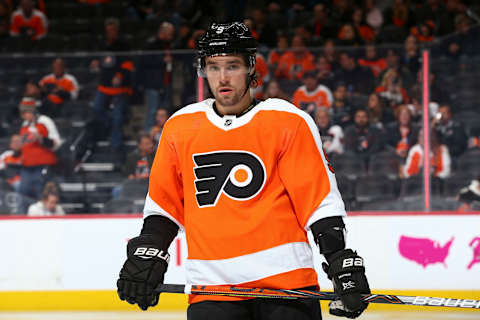
68. . . Philadelphia Flyers. Ivan Provorov. 10. player
Ivan Provorov‘s name doesn’t come up too often in the conversation of the best defensemen in the NHL. Is he really one of the top-10?
Well, here’s how he scored:
TOI: 92% (13th overall)
TOI vs. Elite: 92% (3rd overall)
Points: 48% (14th overall)
Corsi For %: 57% (11th overall)
(+/-): 63% (seventh overall)
Blocks: 55% (seventh overall)
Hits: 40% (seventh overall)
Overall score: 64%
Flyers fans surely knew Provorov was “the guy” last year. When it came to minutes against elite competition, Provorov was among the league leaders. And he checks all the other boxes. He posted good (but not great) point production, and the team is better when he is on the ice.
Last season was a big defensive turnaround for Philly. Alain Vigneault and Carter Hart were certainly instrumental. But it was Provorov shouldering the heavy load on the blue line. And at just 23 years of age, there is an improvement on the horizon.
And Provorov managed to get two fifth-place Norris votes this year. That means there are at least two PHWA members who think he should be that much higher than 10th.
Given his age, I suspect that’s going to change. I think we’re going to be hearing a lot more about Provorov in the seasons to come.
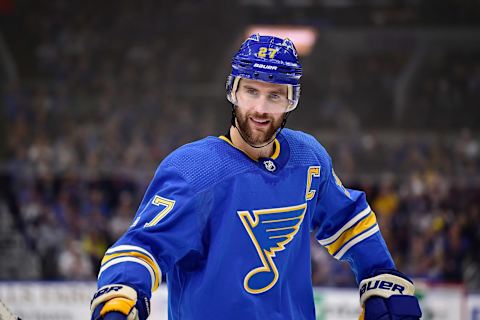
. Vegas Golden Knights. Alex Pietrangelo . 9. player. 942.
Alex Pietrangelo might seem a little low on this list, but his overall score was only the ninth highest:
TOI: 94% (seventh overall)
TOI vs. Elite: 78% (17th overall)
Points: 68% (fifth overall)
Corsi For %: 79% (fourth overall)
(+/-): 63% (sixth overall)
Blocks: 43% (15th overall)
Hits: 22% (16th overall)
Overall score: 64%
He plays enough minutes in all situations. But he lagged behind his peers in deployment against elite competition. In fact, Pietrangelo is one of the only players on this list who failed to lead his team in minutes against elite comp. That honor goes to Colton Parayko, who took his team’s toughest minutes last year by a significant margin.
On the other hand, Pietrangelo’s Corsi For percentage was 2.33 points ahead of his team, good for fourth place (and very near the top).
But he also lagged quite far behind in blocks and hits. This indicates that he is not the toughest player in his own end. And it would appear he’s not always playing against the toughest competition.
Of course, Pietrangelo was the biggest Unrestricted Free Agent signing this year. For those who missed it, he signed $8.8 million per year for the next seven years. And I think it was a necessary move for Vegas. Not only was it ridiculous they didn’t have a right-shot D last year, I argued in an earlier article that the Golden Knights (as they existed at the end of last year) are past their prime, and their Cup window is shrinking fast.
And Pietrangelo is certainly one of the league’s best defensemen, even if he’s number nine on this list. The Norris voters would, of course, disagree with me. He finished fourth overall last year in Norris voting.
Maybe I’m off base, but wait until you see who comes next before making any conclusions.
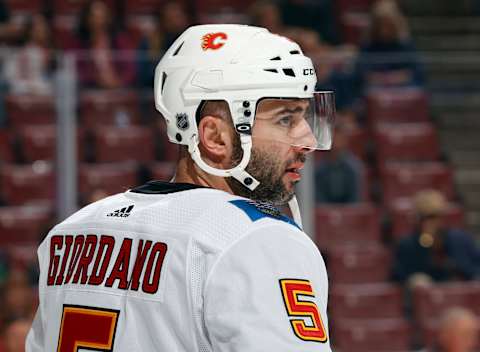
. . Calgary Flames. Mark Giordano. 8. player. 112
Mark Giordano was about Shea Weber’s age when he won his Norris Trophy (in 2018-19). He’ll be 37 this year, and that’s the elephant in the room. But he hasn’t exactly fallen far from his high watermark.
TOI: 89% (18th overall)
TOI vs. Elite: 90% (sixth overall)
Points: 48% (15th overall)
Corsi For %: 82% (second overall)
(+/-): 46% (11th overall)
Blocks: 85% (second overall)
Hits: 23% (15th overall)
Overall Score: 66%
Giordano didn’t get any Norris votes this year, although maybe that’s justified – I’ve got him at #8.
In a conversation of the 10 best defensemen though, I would certainly put Giordano ahead of the likes of Cale Makar, Charlie McAvoy, or Miro Heiskanen (for now). I would even put Giordano ahead of Zach Werenski, who had a phenomenal season last year (but didn’t make this list).
One thing that stuck out was Giordano’s minutes. He had almost the fewest overall minutes of the 19 players I considered. However, it’s worth mentioning that at 18th overall, Giordano still had 89% of the minutes that first overall had. Also, those minutes were heavily logged against elite competition.
Giordano also blocks a lot of shots. No one in the league last year came close to the number of shots Oscar Klefbom blocked. But of the players in the top ten, Giordano leads that category.
Moreover, the Flames are a much better team when Giordano is on the ice. His Corsi For percentage was 52.80, while his team lagged behind at 50.25. That was the second-highest differential I found among the players I tested. That means either the Flames are terrible without him, or he is really good. Maybe both.
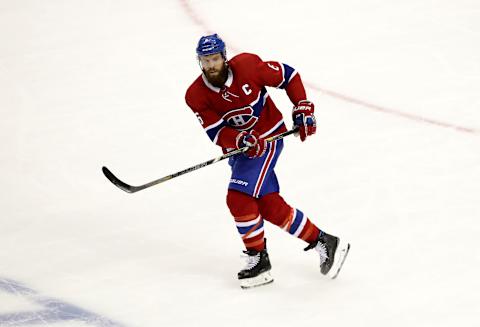
152. . . Montreal Canadiens. Shea Weber. 7. player
Shea Weber‘s season looked a little shaky at the start, but he went on to put down yet another stellar year.
TOI: 92% (11th overall)
TOI vs. Elite: 100% (first overall)
Points: 51% (10th overall)
Corsi For %: 45% (12th overall)
(+/-): 58% (10th overall)
Blocks: 60% (fifth overall)
Hits: 57% (fourth overall)
Overall score: 66%
When Weber was traded for PK Subban in the summer of 2016, I don’t think I was the only one who questioned it. Weber was the older player and was signed until 2026. In other words, he will be 40 when his $7.8 million cap hit comes off the books. That’s an incredible amount of risk to take on a player.
Weber’s injury problems began in 2017-18 and were not resolved by 2018-19. But after he came back from injury in the season before last, he absolutely tore it up. Meanwhile, P.K. Subban was lost in the mix in Nashville and traded to New Jersey, where his game fell off. So right now, at least, Canadiens GM Marc Bergevin looks like a genius.
The number that sticks out is Weber’s TOI against elite competition. He was 34 years old last year, and he played some of the toughest minutes in the league. And he can still bring the physical game, putting up strong numbers in blocked shots and hits. The point production is also there – he managed to score 15 goals in a shortened season.
But Weber also shares a lot of responsibility on the Canadiens with Jeff Petry. In fact, Petry (a career second pairing D) checks all the boxes a #1 D does. He could probably be a #1 D on another team. Though in Montreal, the toughest minutes are still going to Weber.
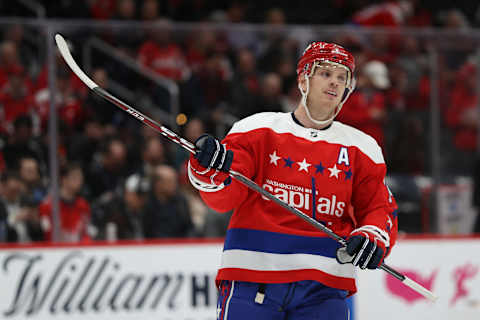
Washington Capitals. John Carlson. 6. player. 19. .
John Carlson‘s outstanding year was rewarded with a solid second-place finish in Norris voting, including 53 first-place votes. So it may be surprising to some that I don’t have him in my top-5.
TOI: 90% (16th overall)
TOI vs. Elite: 84% (10th overall)
Points: 100% (first overall)
Corsi For %: 42% (13th overall)
(+/-): 65% (fifth overall)
Blocks: 54% (ninth overall)
Hits: 26% (12th overall)
Overall score: 66%
When it came to points, John Carlson had an absolute whale of a year. To put his totals into perspective, had he played a full season, he would have scored 89. I took a quick look – I have to go all the way back to 1993-94 to find a number that exceeds that when Ray Bourque scored 91.
While Carlson gained a significant amount of territory in the points column, he lagged behind in nearly all the others. He doesn’t play a ton of minutes. He doesn’t block a ton of shots. He doesn’t hit much.
And more importantly, he was one of the only players who actually made his team slightly worse when he was on the ice. His individual Corsi For percentage of 51.32 was just a little lower than Washington’s 51.60. Again, the 10 best defensemen in the NHL don’t tend to make their team worse when they’re out there.
Similarly, both his TOI and his TOI against elite competition was less than stellar. And most concerning to me was the fact that he only averaged 1:29 on the Penalty Kill. Of the players I considered, that mark was the lowest by a significant margin. I would even call it a threshold issue.
Carlson was also the only player to average more than 4 minutes a night on the Power Play. So I question whether he’s more of an offensive specialist than a legit #1. Then again, he put up strong shot-blocking numbers, something I wouldn’t expect of a true offensive defenseman.
So while Carlson is definitely one of the league’s best defensemen, and certainly one the highest scoring, his resume has some issues.
On the other hand, I think he is clearly more than just an offensive specialist. Bear in mind, some offensive specialists spend absolutely zero time on the PK.
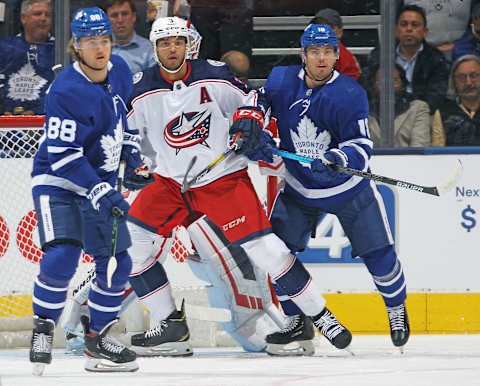
Seth Jones. 5. player. 113. . . Columbus Blue Jackets
Seth Jones managed just five fifth-place Norris votes last year, but that belies the fact he is one of the league’s best defensemen.
TOI: 99% (second overall)
TOI vs. Elite: 82% (14th overall)
Points: 49% (12th overall)
Corsi For %: 60% (ninth overall)
(+/-): 62% (eighth overall)
Blocks: 76% (third overall)
Hits: 37% (eighth overall)
Overall score: 66%
He has the same overall score as Carlson, Weber, and Giordano, but he doesn’t have the resume issues Carlson, Weber, and Giordano have. He’s also the youngest at 26.
When it came to the categories I scored, he checks all the boxes. He plays physical, he blocks shots, he has an enormous amount of TOI. He only scored six goals last year, but it was a shortened season, and he’s capable of 16 goal campaigns.
Perhaps he gets less attention because he’s had some injury issues recently. But when he is in the lineup, he’s definitely “the guy” in Columbus.
One thing worth noting is low deployment against elites. But unlike Pietrangelo, Jones still leads his team in that category.
On the Blue Jackets, both Zach Werenski and David Savard log heavy minutes against elite comp. I also considered Werenski for this list, because like Jones, he is deployed in all situations and plays nearly as many minutes as Jones.
Werenski also had a whale of a year, scoring 20 goals. If you’re wondering why he isn’t on this list (he finished eighth in Norris voting), his overall score was 58%.
That being said, Columbus is one of those teams I mentioned that arguably has two #1 D.
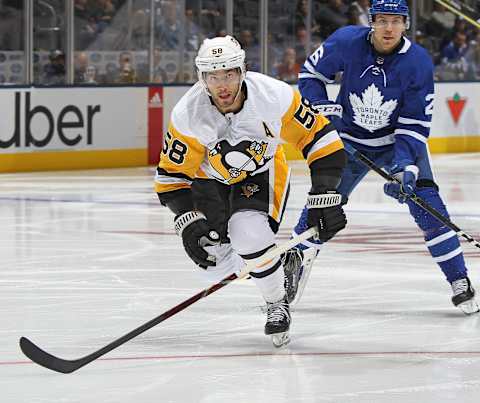
4. player. 92. . . Pittsburgh Penguins. Kris Letang
It’s been a few years since the Penguins won their Cups, but Kris Letang quietly put together a very solid season, yet again.
TOI vs. Elite: 92% (fourth overall)
Points: 66% (sixth overall)
Corsi For %: 60% (eigth overall)
(+/-): 42% (12th overall)
Blocks: 51% (11th overall)
Hits: 55% (fifth overall)
Overall score: 67%
Two Norris voters felt Letang was the fifth-best defenseman last year. In 2018-2019, 28 of them felt he was at least fourth best. And in 2015-16, he had 112 such votes, including eight for first place. So I don’t think I’m being too high on him.
Of course, Letang’s career has been plagued by injuries, and that has largely hurt his Norris contention. He even missed eight games last season. You actually have to go all the way back to 2010-2011 to find a year he played all 82 games.
Still, when he’s on the ice, he’s one of the best in the league.
Last year (when he was playing), he was among the league leaders in ice time. Not just in overall ice time, but also against elite comp. His offensive production is perennially strong, and it was strong again last year. He plays in all situations. And his team is noticeably better when he is on the ice.
Injuries might be the only problem with Letang’s resume. But even with all the games he missed, he still led his team in total TOI and TOI against elite comp. And his 2:12 average TOI on the PK equaled Jack Johnson’s.
To be honest, I would have demoted Letang for the injuries, but Seth Jones has had injury problems too. In fact, all the players between number six to nine had issues with their resumes.
On balance, I think Letang belongs where he does on this list, despite the Norris voting snub and not just because of his overall score. He really is the cornerstone of Pittsburgh’s defense and an indispensable member of its core.
It may be tempting to overlook this fact since Crosby and Malkin were always in the picture. But make no mistake – Letang is a big reason they won any Cups, and he’s a big reason they’re a good team each and every year.
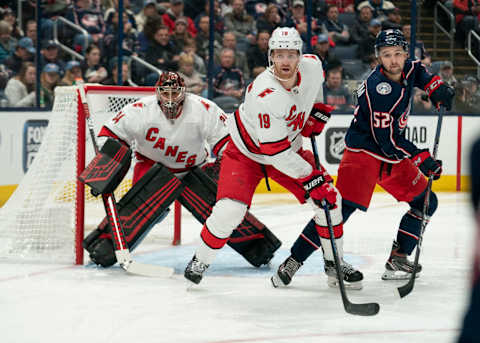
3. player. 109. . . Carolina Hurricanes. Dougie Hamilton
Until he went down with a season-ending leg injury, Dougie Hamilton was probably the front-runner for the Norris.
TOI: 87% (19th overall)
TOI vs. Elite: 87% (eighth overall)
Points: 78% (third overall)
Corsi For %: 100% (first overall)
(+/-): 100% (first overall)
Blocks: 46% (12th overall)
Hits: 37% (ninth overall)
Overall score: 76% (through 47 games)
After just 47 games, Hamilton was plus 30. And his Corsi For percent was 58.10 on a team that had 54.30. Those are exceptional figures. Only Shea Theodore could boast a comparable Corsi Differential last year.
In fact [minor spoiler alert] Dougie Hamilton’s overall score of 76% was the highest.
The only reason I didn’t put him at number one is that last year was a statistical outlier, and the sample size was small. Hamilton’s 2017-28 season with the Canes would have seen him obtain a more down-to-earth 66% overall score, good for fifth-eighth place.
That year, he received one fourth place Norris vote and one fifth-place vote. This last year, of course, he finished seventh in Norris voting, getting as high as two third-place votes, in spite of his abbreviated season.
I think that those two Norris voters are probably right, and Hamilton is the 3rd best defenseman in the NHL right now.
Now, Jaccob Slavin’s breakout season saw him finish higher than Hamilton in 2020 Norris voting. But as I indicated before, Slavin isn’t a PP guy. Slavin did, however, exceed Hamilton, both in TOI and elite TOI (adjusted for a full season). And this creates a problem with Hamilton’s resume. It’s worth noting here that of the 19 players I looked at, Hamilton had the lowest average even-strength minutes.
However, a lot of those extra minutes Slavin had were the result of Hamilton being down. I believe that if Hamilton had played the full year, he might have exceeded Slavin’s TOI numbers.
On balance, I believe Hamilton is where he belongs on this list. His impressive season had a smaller sample size and was a statistical outlier. But it was still an impressive season, and he was already an impressive defenseman, to begin with.
It will be interesting to see how Dougie Hamilton does this year and if that number three spot is justified.
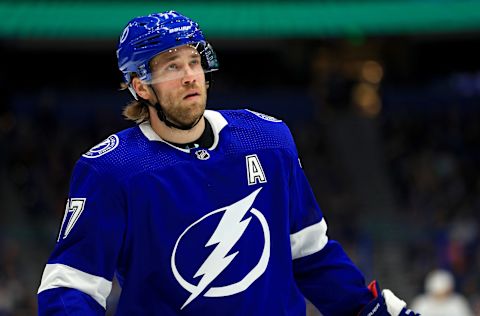
player. 23. . . Tampa Bay Lightning. Victor Hedman. 2
After winning the Conn Smythe trophy last year (for the most valuable player in the playoffs), It may come as a surprise to some that Victor Hedman isn’t on this list.
TOI: 89% (17th overall)
TOI vs. Elite: 71% (19th overall)
Points: 77% (fourth overall)
Corsi For %: 61% (seventh overall)
(+/-): 94% (second overall)
Blocks: 51% (11th overall)
Hits: 37% (10th overall)
Overall score: 68%
Admittedly, I put no stock in playoff performance. For one, I can’t readily compare all the players. Not only does their sample size vary, but the Conn Smythe almost always goes to a player on the Cup-winning team. Hedman certainly deserved it, but my point is that if any of the other teams were in the finals, he wouldn’t have been considered. It was also a strange year.
That being said:
- Pietrangelo didn’t win it when St. Louis won the Cup the year before;
- Carlson didn’t win it the year before that;
- Letang didn’t win it the year before that, or the one prior.
And Hedman won the Norris in 2018. That wasn’t a fluke, of course; he is a perennial contender for the Norris. Last year he finished 3rd in Norris voting.
So while his postseason might have been perfect, his regular season was not. He was near the bottom of my sample for TOI and the absolute bottom for TOI against elite comp. In fact, there were at least 20 other defensemen in the NHL that play more minutes than he does against elite comp. And for someone to be named the best defenseman in the league, I see that as a bit of a problem.
But the Tampa Bay Lightning are so stacked they really don’t need to deploy their #1 D as heavily against elite comp. So I can’t hold that too much against him. On balance, I felt that the team success stat of (+/-) appropriately buoyed out his ice time deficiencies. And in spite of everything, his overall score was the 3rd highest.
That being said, I believe there’s one other player out there, who is right now, the very best…
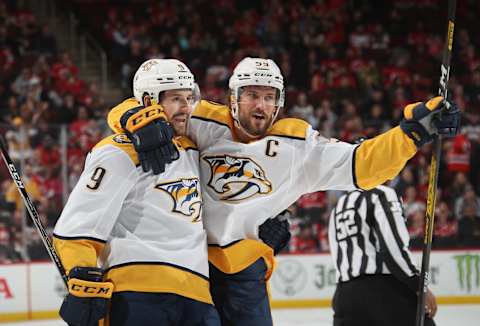
. . Nashville Predators. Roman Josi. 1. player. 151
Since you haven’t seen his name already, it should also come as no surprise that this year’s Norris winner, Roman Josi, is, in my estimation, the league’s best defender.
TOI: 99% (third overall)
TOI vs. Elite: 86% (ninth overall)
Points: 87% (second overall)
Corsi For %: 81% (third overall)
(+/-): 85% (third overall)
Blocks: 54% (eighth overall)
Hits: 25% (13th overall)
Overall score: 74%
It is true that Josi’s overall score of 74% was second to Dougie Hamilton’s 76%. But as I mentioned earlier, Hamilton had a small sample size, and it was an outlier. Josi did not.
Josi had an exceptional year for offensive production. The Preds have the 10th best Corsi For percent, but when he’s on the ice, they become the fourth-best team. And he does it all while logging some of the heaviest and hardest minutes in the NHL.
And that’s just what the numbers say. Watching him play, you can see how effortlessly he moves the puck out of the defensive zone and through the neutral zone. He’s not overly physical, but with his speed and transition game, he clearly doesn’t need to be.
In fact, Josi’s so good he’s changing the position itself. Thanks in part to Josi and the Pred’s highly successful defensive experiment, defensemen all over the league now need to activate more on offense. The classic stay-at-home defenseman is quickly becoming an endangered species.
Just another reason why he’s the best.
Honorable Mentions
A few times, I mentioned the fact I considered 19 players to get to my list of 10. Those other players and their overall scores were:
11. Rasmus Ristolainen: 59%
12. Miro Heiskanen: 58%
13. Zach Weresnki: 58%
14. Jacob Trouba: 57%
15. Erik Karlsson: 57%
16. Oliver Ekman-Larsson: 56%
17.Oscar Klefbom: 56%
18. Brent Burns: 52%
19. Drew Doughty: 50%
I also initially considered these players but excluded them because they didn’t play sufficient minutes in all situations:
- Charlie McAvoy (1:20 on the PP)
- Thomas Chabot (0:14 on the PK)
- Colton Parayko (0:46 on the PP)
- Jaccob Slavin (0:54 on the PP)
- Cam Fowler (0:40 on the PK)
- Shea Theodore (0:08 on the PK)
- Aaron Ekblad (1:26 on the PP)
- Cale Makar (0:06 on the PK)
Also, I eliminated Jared Spurgeon early on because he was fourth on his team in both TOI and TOI against elite comp. He had a great year, and he’s a great player, but I wouldn’t consider him among the league’s best defencemen until he can clearly establish himself as a number one.
Next. With dates set, Ron Francis and the Seattle Kraken can now really get to work. dark
Thanks for reading!